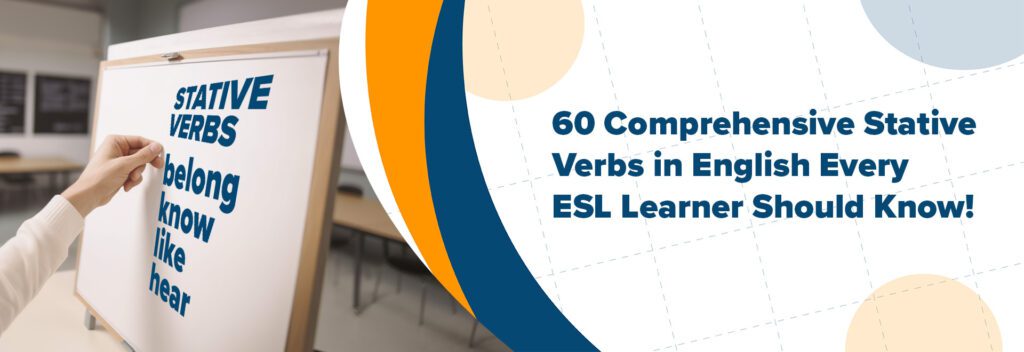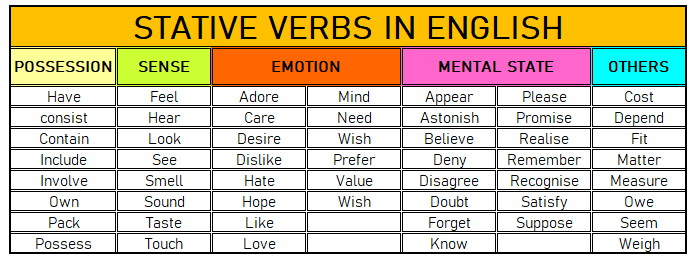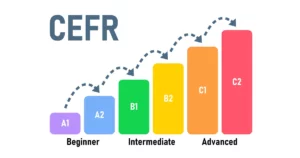
Stative Verbs in English Every ESL Learner Should Know!
If you’re an ESL learner looking to enhance your English language skills, understanding stative verbs is crucial. You are here because you are an ESL learner who wants to learn more about English and all its aspects, especially grammar.
As an ESL learner, it is your right to know, if not all, some aspects of English grammar that are important in sentence construction. You know how parts of speech function in sentences, but do you know that each part of speech has distinct and specific types and functions?
Verbs, for example, do not only focus on action words but there are other states of verbs that you, for sure, unknowingly use. You are aware that the word you use is a verb, but you don’t know its exact function and usage in sentences.
In this learning content, we will delve into one specific state of the verb and learn about its usage in sentences. We’ll provide you with an ultimate list of stative verbs in English, ensuring you can communicate effectively and accurately.
Table of Contents
Stative Verbs: Definition and Usage
By this time, you must have asked yourself about stative verbs. Then, what are stative verbs? Stative verbs, also known as state verbs, describe a state of being rather than an action. Unlike dynamic verbs, they don’t show physical movement or change. These verbs are only used in simple and perfect tenses. They cannot be used in continuous sentences.
Example:
■ I appreciate your effort in coming here. ✅
■ I am appreciating your effort in coming here. ❎
Stative verbs express thoughts, emotions, sensations, or states of being. They typically describe conditions or situations that are not easily quantifiable or measurable. Stative verbs are often used to express opinions, thoughts, or feelings, as well as to describe characteristics or states that don’t involve actions. Below are stative verbs in English. At the end of this article, you will see sample sentences using these stative verbs.

List of Common Stative Verbs
Here is a categorized list of common stative verbs that ESL learners should know:
■ Thoughts and Opinions
Believe: Do you believe in aliens?
Think: I think this movie is amazing.
Know: She knows the answer to that question.
Understand: Do you understand what I’m saying?
■ Emotions and Feelings
Love: They love each other deeply.
Like: I like chocolate ice cream.
Hate: He hates Mondays.
Enjoy: We enjoy traveling.
■ Senses and Perception
See: Can you see the beautiful sunset?
Hear: I can hear birds chirping outside.
Smell: This flower smells wonderful.
Taste: The cake tastes delicious.
■ Possession
Have: I have a new car.
Own: She owns a beautiful house.
Possess: They possess great talent.
Belong: This book belongs to her.
■ States and Conditions
Be: I am tired after a long day.
Feel: He feels nervous before exams.
Seem: She seems happy today.
Appear: It appears that he is upset.
■ Measurement
Weigh: This bag weighs five kilograms.
Cost: How much does this shirt cost?
Measure: Can you measure the length of the table?
Contain: The box contains twelve pens.
ESL learners should be familiar with these verbs to communicate effectively and avoid common grammatical errors. By familiarizing yourself with this ultimate list of stative verbs, you’ll be able to express yourself accurately and confidently.
Remember that stative verbs are not used in continuous tenses as they describe a state rather than an action. Practice using these verbs in context to strengthen your English language skills and become a more effective communicator.
While this list is not exhaustive, it provides a solid foundation for understanding stative verbs in English. Practice using these verbs in context, and gradually, you’ll become more proficient in using them naturally in your conversations and writing.
Stative Verbs vs Dynamic Verbs
Stative verbs and dynamic verbs are two categories of verbs that are totally opposite. As discussed, stative verbs are verbs intended to describe things that do not involve any action. On the other hand, dynamic verbs refer to action words that involve the physical movement of the doer.
Consider the examples below:
Dynamic Verb: The team played basketball fairly. – The subject, the team, did the action and it involved physical action.
Static Verb: The employees look good in their attire. – The subject, the employees, did not do any action, but their appearance pleased the audience.
Other Examples of Stative Verbs
| POSSESSION | |
| Has / Have | The manager and the CEO both have a villa by the sea. |
| Consist | The English alphabet consists of 26 letters. |
| Include | Some of the things I like include watching movies and cooking. |
| Involve | The new project will involve multiple teams to complete it on time. |
| Pack | The warehouse is packed with expired canned goods. |
| SENSE | |
| Look | Wow! The chicken curry looks delicious! |
| Smell | Sizzling barbecue smells so enticing. |
| Sound | Why do you sound like you can’t breathe? |
| Taste | The spaghetti my mom cooked tastes so yummy. |
| Touch | Please don’t touch any stuff that isn’t yours. |
| EMOTION | |
| Adore | My father adores my mother so much. |
| Care | I don’t care what people think. |
| Desire | Politicians desire power. |
| Dislike | Do you dislike the smell of flowers? |
| Hope | The children hope to receive Christmas gifts. |
| Mind | Please don’t mind them; they are just kidding. |
| Need | You need to submit the pertinent documents before the end of your shift. |
| Prefer | My mother prefers watching TV at home. |
| Value | All children should value their parents. |
| Wish | I wish I could win the lottery. |
| MENTAL STATE | |
| Astonish | The CEO was astonished by the new manager’s performance. |
| Deny | Please don’t deny you’re cheating. |
| Disagree | The client disagreed with the board’s decision. |
| Doubt | There is no doubt that Mr. Smith will be promoted. |
| Forget | Why did you forget to turn off your computer? |
| Please | We are pleased to announce the promotion of Miss Watanabe as the new manager. |
| Promise | Promise me you’ll come back here next month. |
| Realize | Have you realized the importance of education? |
| Remember | It’s your responsibility to remember and keep all your passwords. |
| Recognize | Would you recognize me when we see each other after 10 years? |
| Satisfy | The performers satisfied the audience in last night’s play. |
| Suppose | Do you suppose it will rain tomorrow morning? |
| Depend | Your incentives depend on your performance. |
| Fit | Do these clothes fit your body? |
| Matter | It’s the thought that matters. |
| Owe | Mr. Mush owes a lot of money to the bank. |
Learning stative verbs is a significant step toward mastering the intricacies of the English language. Now that you have this valuable resource at your disposal, go ahead and explore the world of stative verbs with confidence. Happy learning, and may your English language journey be fulfilling and rewarding!



